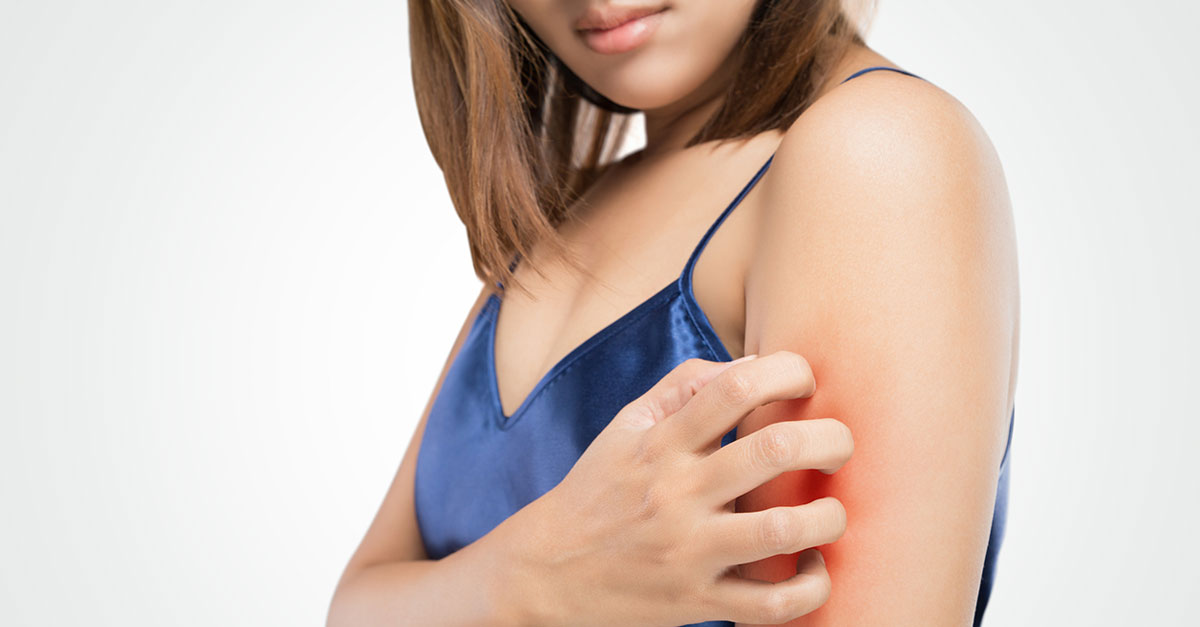It’s summer, and you know what that means—lots of bugs! And lots of bugs can mean lots of bug bites—the kind that make us itch for days.
Drugstores are stocked with creams and capsules that promise relief, and the Internet suggests some off-the-wall ideas—deodorant, transparent tape or nail polish anyone? There are tons of options!
I’ve probably tried a dozen itch products over the years, but nothing has ever worked very well. I wanted to know, when you’re standing in the drugstore aisle with a bad bug bite itch, and you’re faced with so many choices, which products should you buy to really stop the itch?
For relief, I called Andrew Rubman, ND, a Daily Health News contributing editor and the founder and medical director of the Southbury Clinic for Traditional Medicines in Southbury, Connecticut.
He shared his four favorite methods, since itchy bug bites are such a common complaint for Dr. Rubman’s patients, who live in woodsy New England. Here is his proven protocol, which involves two over-the-counter remedies and two natural treatments…
First and foremost, when you get a bite, try not to scratch the heck out of it, Dr. Rubman stressed. (If you already have, then skip steps #1 and #2, below and go straight to the subsection: “For Irritated Skin”). Scratching the bite can make it hurt more later, and it can break the skin, which raises the risk for infection.
STEP #1 TO FIGHT THE ITCH
After you wash the bite with soap and warm water and dry it off, the first thing that you want to do is to blunt the pain and itchiness as fast as possible, said Dr. Rubman. The moment he notices a bug bite—within seconds, even—Dr. Rubman applies a dime-sized amount of an over-the-counter antihistamine cream, such as Benadryl (diphenhydramine). “Choose this type of cream—rather than calamine lotion or hydrocortisone cream—because it helps your body deal with the initial, traumatic histamine response to the bite,” he said. You can buy a one-ounce tube for about $7 at any drugstore.
STEP #2
Once you’ve reduced the severity of the pain and itchiness, try to get rid of the agent in the bite that’s causing the pain and itchiness. That’s where one of Dr. Rubman’s favorite natural products comes in—lye soap. (You can buy a three-ounce bar for about $5 here.)
The alkaline properties of the soap neutralize and break down the bug’s stinging saliva, Dr. Rubman explained, which means that the bite is less likely to be itchy and painful in the hours and days that follow.
About 10 to 15 minutes after you apply the antihistamine cream, wash the affected area with lye soap two times in a row with warm water, and then dry the area. Next, rinse the bar to get it wet and rub it onto your hand until it forms a rich, stiff lather. Wipe that lather onto the affected area. When the lather hardens after a few minutes, wash it off. Try this routine once a day—more often if the pain or itchiness is severe—and stop using the Benadryl after that initial treatment.
FOR IRRITATED SKIN
When you’ve been scratching at a bite, don’t use the antihistamine or the lye soap, said Dr. Rubman, because they might irritate skin that’s aggravated or broken. Here are two alternatives…
If the skin is scratched only a little, use the Aveeno Active Naturals Moisturizing Bar. Rub the bar with just enough water to create a thick paste. Rub the paste gently into the skin over and around the bite, and let it dry before washing it off. The Aveeno bar is almost as effective as the lye soap in helping remove the bug’s stinging saliva, but it’s more gentle on the skin. You can buy the bar for $3 here.
If the skin is broken, Dr. Rubman advised dabbing on a dime-sized amount of antibiotic cream, such as Neosporin, to keep the bite from becoming infected. For instance, you can buy a 0.5-ounce tube for about $7 at any drugstore. Then cover it with a bandage to prevent further scratching and/or infection. Wait until the skin has healed over to apply any of the products listed above.
I don’t know about you, but I’m going to keep these four key products in my medicine cabinet!


